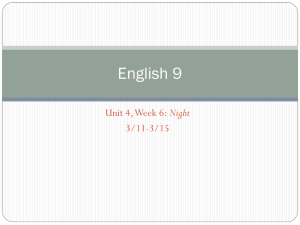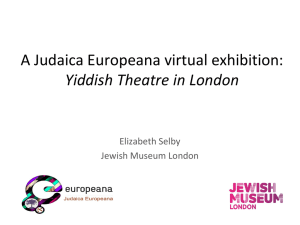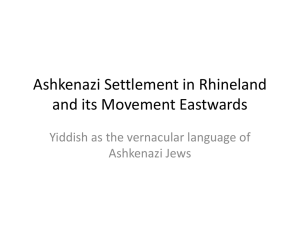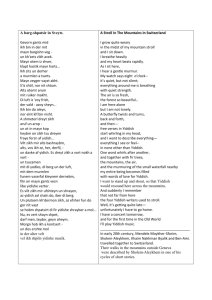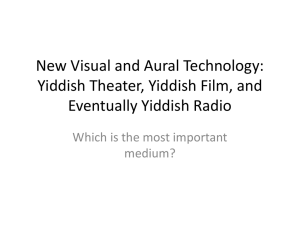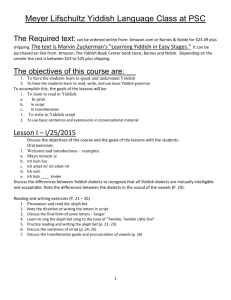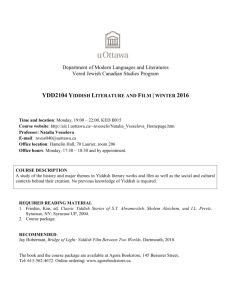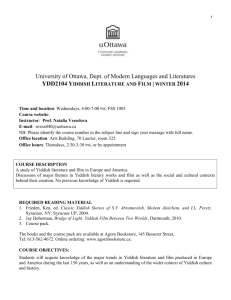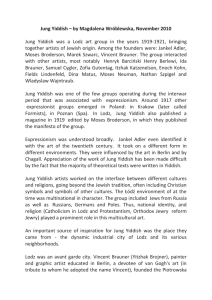Mother and Daughter Enjoy Yiddish Together
advertisement
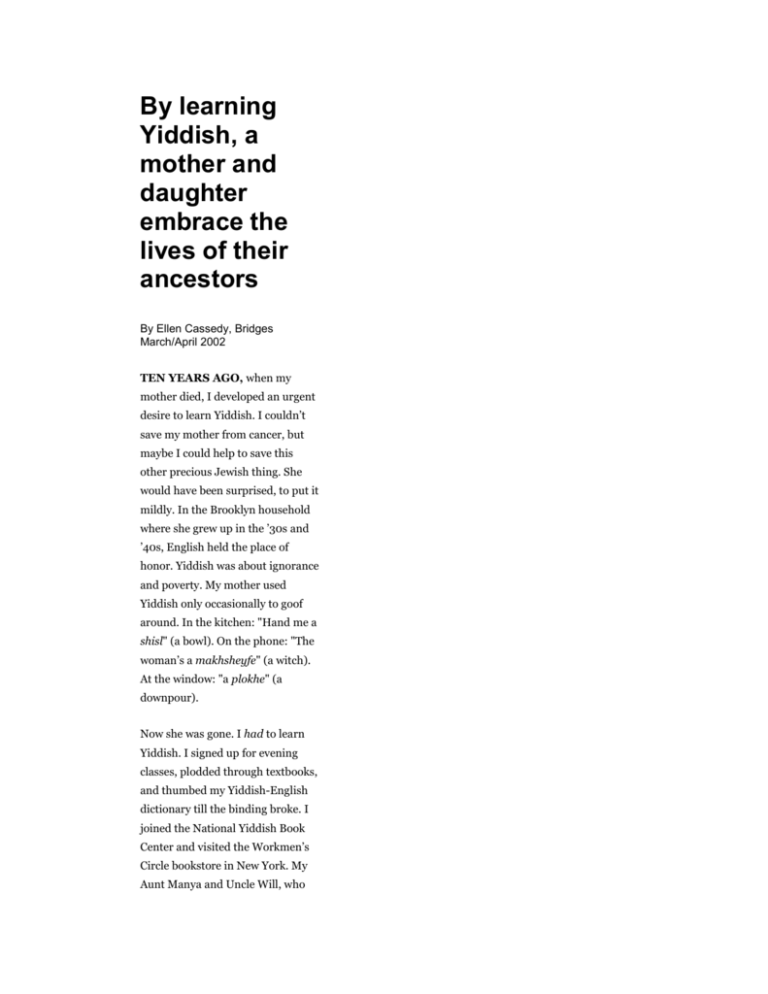
By learning Yiddish, a mother and daughter embrace the lives of their ancestors By Ellen Cassedy, Bridges March/April 2002 TEN YEARS AGO, when my mother died, I developed an urgent desire to learn Yiddish. I couldn’t save my mother from cancer, but maybe I could help to save this other precious Jewish thing. She would have been surprised, to put it mildly. In the Brooklyn household where she grew up in the ’30s and ’40s, English held the place of honor. Yiddish was about ignorance and poverty. My mother used Yiddish only occasionally to goof around. In the kitchen: "Hand me a shisl" (a bowl). On the phone: "The woman’s a makhsheyfe" (a witch). At the window: "a plokhe" (a downpour). Now she was gone. I had to learn Yiddish. I signed up for evening classes, plodded through textbooks, and thumbed my Yiddish-English dictionary till the binding broke. I joined the National Yiddish Book Center and visited the Workmen’s Circle bookstore in New York. My Aunt Manya and Uncle Will, who still speak Yiddish at home, wrote me letters. I logged on to the Yiddish e-mail club, Mendele, and sang along with Yiddish tapes in the car. Little by little, Yiddish became a living presence in our household. And when it came time for my teenaged daughter Meg to prepare for her bas mitsve, I suggested that she, too, might like to study Yiddish. Why Yiddish rather than Hebrew? Though Yiddish has at times been a part of the Jewish religious tradition, for me it’s most meaningful as a part of worldly or "everyday" Jewish culture. It’s the vernacular that Meg’s foremothers spoke in the kitchens, lanes, and marketplaces of Poland, Latvia, Lithuania, New York, and Baltimore. It’s the language in which great Jewish writers conveyed new humanist ideas, and that united activist Jews on both sides of the Atlantic. Giving Meg a taste of the daily lives of her ancestors—in the shtetlekh (small towns) of the Old World and the tenements of the New—felt to my husband, Jeff, and me like a political act. It meant saying that ordinary, secular Jewish culture matters. That the daily tasks of keeping house and making a living deserve a place of honor in Jewish history alongside the actions of famous men. That to become a Jewish adult, Meg needed to study that history. Meg decided that at her bas mitsve she would read from the Torah, in Hebrew, about the Jews’ last night in Egypt. Then she would present her Yiddish study of another, more modern, exodus—the immigration of a great multitude of European Jews to America. The day came. A hundred friends and relatives assembled at my husband’s family’s temple in Baltimore. In memory of my mother and Jeff’s father, Meg lit candles and recited a lovely secular blessing, in Yiddish, composed by Judith Seid. "Zol di sheynkayt fun zeyr lebn balaykhtn di doyres," she chanted. ("May the beauty of their lives shine from generation to generation.") The Torah service followed. Meg recited in Hebrew, then began her remarks in English interspersed with Yiddish poems and songs. She started with a poem by early-20thcentury Russian immigrant Eliezer Shindler: Undzer yidish Undzer sphrakh Farmogt dokh Oytsres gor a sakh. . . Our Yiddish Our language Does indeed possess A wealth of treasures . . . The treasures Meg chose to share ranged from the happy song about the joys of poverty to Polish writer I.L. Peretz’s "Bontshe shvayg" ("Bontshe the Silent"), a scathing tale that, in Meg’s words, "tells Jews to wish for more than a good breakfast—to stand up for themselves instead of meekly bowing down." She read from a worker’s 1908 letter to the Forward, New York’s Yiddishlanguage daily, about his struggle to fight back against a tyrannical boss. She read from Avrom Reisen’s tale of the battle between the sexes, concluding that "we must continue to fight for equality." One man came up at the end of the service wiping his eyes. "I’m going to have to send you the dry cleaning bill for my handkerchief," he told Meg. "You said that blessing just the way my mother used to." Greatgreat-uncle Will whispered the highest praise: "She doesn’t even have an accent!" For me, Yiddish—the embodiment of the everyday, the profane—is sacred. In part this is because for my generation—and for Meg’s —Yiddish is exotic, endangered. No longer taken for granted, it has become a precious thing, a treasure we must honor and protect. Meg deserves the last word: "I’m glad I connected myself with both the religious Jewish language and the more everyday one. These languages came alive to me. I plan to pass on the knowledge of Yiddish to my children, who, I hope, in turn will pass it on to their children. Sholem aleykhem and shalom!" Utne Reader, 2007. Originially from the Jewish feminist magazine Bridges, Spring 2000.
